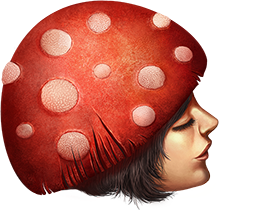Icons - Part II
Introducing the second instalment in the “Icons” series.
Icons Part 2 commemorates the release of the Vasil hard fork on Cardano with a series of stunning images that merge the visual themes of technology and blockchain with imagery inspired by Greek mythology, specifically those directly connected to the network.
Each NFT contains in its metadata a short description of the significance of the depicted subject both for Cardano and in Greek mythology.
Plutus - Trustless Distribution
Mythology:
Plutus, the Ancient Greek God of Wealth, depicted being blindfolded by Eirene, the Goddess of Peace.
This references the myth of Plutus being blinded by Zeus, so that he can distribute wealth without prejudice and not favour the good.
Cardano:
Plutus is the native smart contract programming language, on Cardano, which enables guaranteed correct execution. It is based on an advanced functional programming language, Haskell.
The collection consists of 3 base works depicting Plutus, Daedalus and Ouroboros, with each having 9 different renditions corresponding to the 3 rarity tiers of the drop: 5 renditions for the “Common” tier, 3 for “Uncommon”and finally one for “Rare”.
The mint will last for one Cardano epoch (5 days) following the Vasil HFC event, after which the policy id of the collection will close forever. The final number of NFTs in the collection will be determined by how many the community mints during the event. For reference, the mint for the first part of the Icons collection, released in September 2021, and commemorating the Alonzo hardfork, was open for 3 epochs and a total of 758 NFTs were minted.
(NFTs from the first collection are still available to purchase on the secondary market.)
Daedalus - First Flight
Mythology:
Daedalus, meaning "skilled craftsman" in Greek, was the father of Icarus and creator of the labyrinth that imprisoned the minotaur.
After being imprisoned himself, Daedalus and his son escaped by building wings from feathers, thread, and wax.
Cardano:
Daedalus is a full node wallet for Cardano, meaning it stores a full copy of the Cardano blockchain and independently validates every transaction. This enables maximum security and trustless operation.
Each image will be individually serialised and served to minters in sequence. The serial number of the image will also be reflected in the title of the NFT.
The “Uncommon” and “Rare” versions of each artwork will be randomised in between the 5 versions of the “Common” collection. However, the images from the common tier will be served in sequential order, each version being minted for 5 images in the sequence, meaning that you will be able to predict which variation of a “Common” artwork you will receive by tracking the mint number.
Even though the distribution of the Uncommon and Rare versions of the artworks will be randomised among the sequence of Common NFTs each rarity tier has its own sequence.
Ouroboros - Cryptographic Perpetuity
Mythology:
The Ouroboros, a snake swallowing its own tail, has been interpreted in various ways throughout history, but most cultures agree it’s a symbol for eternal renewal, a cycle of life, death and rebirth.
Cardano:
For Cardano, Ouroboros represents the concept of infinity.
A proof-of-stake protocol for the global, distributed network that will be able to grow sustainably and incorruptibly, providing “greater opportunities to the world while also preserving it.”
The fourth artwork, Hydra - Immortal Heads, will be airdropped at the end of the minting window to collectors that hold one of each of the 3 base artworks.
During the mint all holders of NFTs from the original “Icons” collection will be eligible to claim an Ouroboros NFT from Part II (hardware wallets are not compatible with the claim).
Icons - Part II is the first individual NFT collection to make use of the ArgusNFT AI powered image verification system, until now only available to marketplaces.
"Aegis" will make the service available to artists and NFT creators directly.
Icons - Part II is brought to you in association with Ada Anvil.































